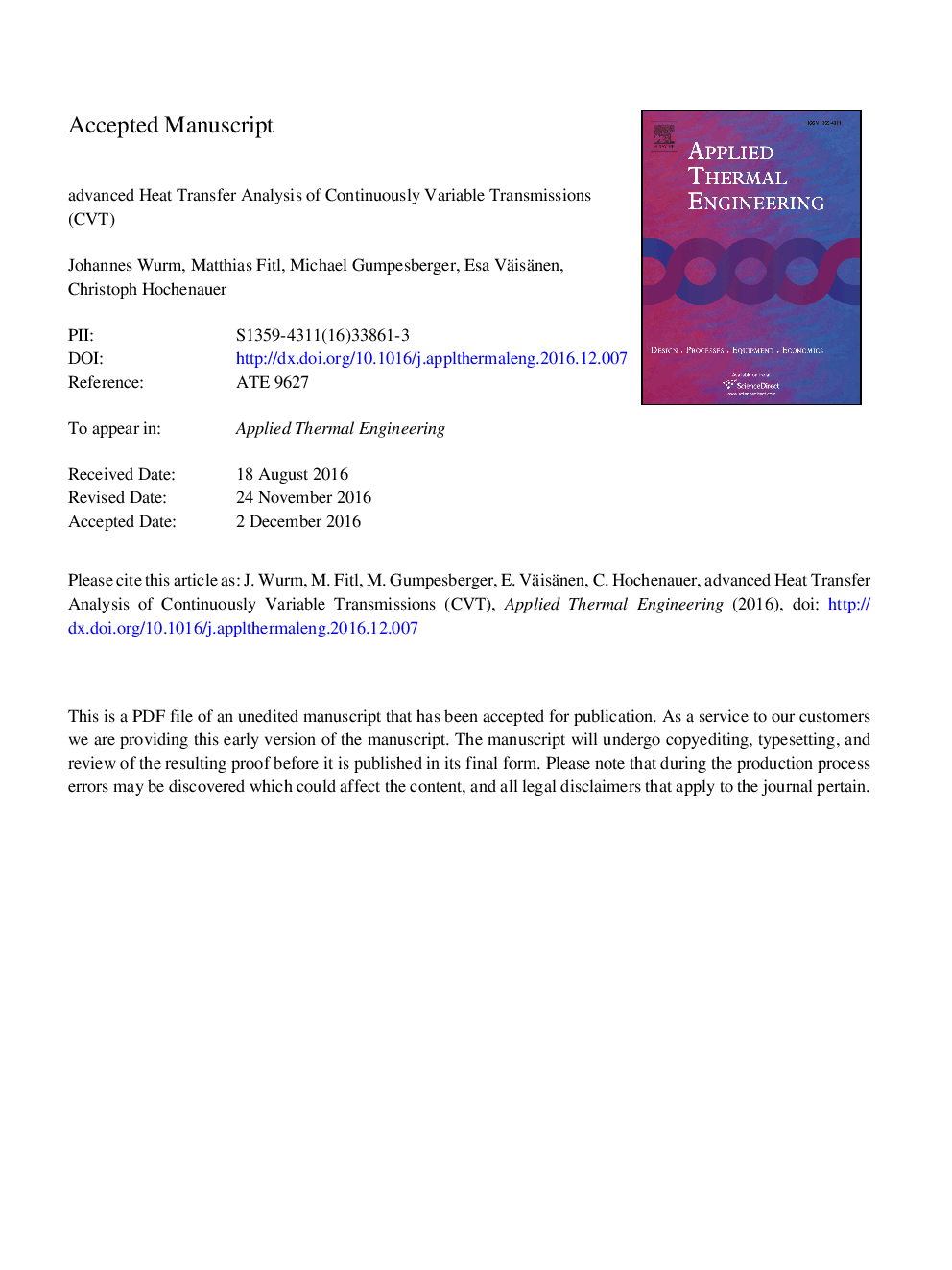| Article ID | Journal | Published Year | Pages | File Type |
|---|---|---|---|---|
| 4991977 | Applied Thermal Engineering | 2017 | 23 Pages |
Abstract
The presented paper focuses on heat transfer analysis of rubber-belt continuously variable transmissions (CVT). The huge advantage of this system is the continuous change of the transmission ratio without interrupting the torque output. The moderate efficiency of CVTs due to belt deformation and frictional forces, however, leads to increased thermal loads. Especially the belt life span suffers under high temperatures. The numerical prediction of the resulting heat distribution at critical load cases is of key interest. In current literature it has hardly been investigated due to the complexity of the system. The numerical model introduced in this work is able to conduct time efficient heat transfer analysis within an enclosed CVT by using computational fluid dynamics (CFD). The transient process is transferred to a quasi-steady-state case reducing the computational time drastically. A new method to compute rotational symmetric temperature profiles for non-rotating pulleys has been developed. As a result, the surface temperatures of each component can be computed accurately. Measurements, conducted on an engine test rig, confirm the numerical results. The presented model can be applied to evaluate design changes and to reduce peak temperatures and hence increase product reliability. Moreover, the presented method offers a huge advantage for further transient processes which can be represented by a steady-state case and focus on heat transfer analysis.
Related Topics
Physical Sciences and Engineering
Chemical Engineering
Fluid Flow and Transfer Processes
Authors
Johannes Wurm, Matthias Fitl, Michael Gumpesberger, Esa Väisänen, Christoph Hochenauer,
